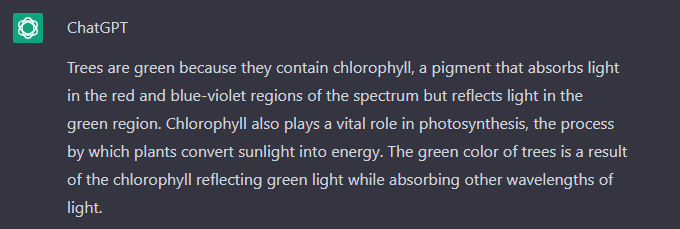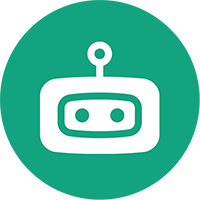Chat GPT Online
Use free AI chat based on GPT (Generative pre-trained transformer). It has been trained on a massive amount of text data from the internet and can generate human-like text responses to a given prompt. It can answer questions, converse on a variety of topics, and generate creative writing pieces.
Open Chat MidjourneyWhat is Chat GPT?
GPT is a language model designed to answer text queries and generate natural language responses. It is part of the broader field of artificial intelligence known as natural language processing (NLP), which seeks to teach computers to understand and interpret human language.
Chat GPT is built using a deep learning architecture called the Transformer, which enables it to learn patterns in language and generate text that is coherent and human-like. It has been trained on a massive corpus of text data and can therefore generate responses to a wide variety of prompts, from general knowledge questions to more complex conversational topics.
One of the main applications of GPT is in chatbots, where it can be used to provide automated customer service, answer FAQs, or even engage in more free-flowing conversations with users. However, it can also be used in other NLP applications such as text summarization, language translation, and content creation.
Overall, Chat GPT represents a significant advancement in the field of NLP and has the potential to revolutionize the way we interact with computers and digital systems.
How to use Chat GPT?
-
Provide a prompt
Provide a prompt or context for the model to generate a response to. This could be a question, a statement, or any other text.
-
Generate a response
Once you have provided a prompt, the platform will send a request to the API, which will return a response generated by Chat GPT.
-
Review the response
Review the response generated by Chat GPT and evaluate its quality. You may need to adjust your prompt or other parameters to get a better response.
Best AI GPT Prompts
As an AI language model, Chat GPT generate responses to a wide range of prompts, but here are some examples of prompts that GPT typically do well with:
- Tell me a joke.
- What is the capital of France?
- Can you recommend a good book to read?
- How do I make a cup of coffee?
- What is the meaning of life?
- What is the weather like today?
- Can you explain the concept of artificial intelligence?
- Who won the last Super Bowl?
- What is the best way to learn a new language?
- Can you help me solve this math problem?
These are just a few examples, but feel free to ask Chat GPT any question or prompt.
Why is Chat GPT so Good?
Chat GPT is considered to be good for several reasons:
- Large training corpus: Chat GPT was trained on a massive corpus of text, which allows it to generate more diverse and sophisticated responses compared to other language models.
- Advanced architecture: The model is based on the GPT architecture, which uses transformer blocks and self-attention mechanisms, enabling the model to understand and generate text more effectively.
- Real-time processing: Chat GPT can process and generate responses in real-time, making it suitable for conversational AI applications.
- High-quality outputs: The model generates text that is often hard to distinguish from text written by a human, due to its advanced training and sophisticated architecture.
- Wide range of applications: Chat GPT can be used for a wide range of applications, including chatbots, customer service, language translation, content creation, and more.
However, it's important to note that the quality of the output generated by Chat GPT can be limited by the quality and diversity of the data it was trained on. It's also important to implement appropriate filtering and moderation strategies to ensure that the output is appropriate and free from bias.
Frequently Asked Questions
-
How does Chat GPT work?
Chat GPT is a conversational AI model developed by Open AI based on the Generative Pretrained Transformer (GPT) architecture. The model has been trained on a diverse range of internet text, allowing it to generate human-like text in response to prompts given to it.
When a user provides input, the model processes the text and generates a response by predicting the most likely next word based on the input and its training data. The response is then generated by sampling from the top predictions. The entire process is performed by the model in real-time.
The GPT architecture consists of multiple transformer blocks, each containing self-attention mechanisms and feedforward neural networks, which allow the model to understand and generate text by learning patterns in the training data. -
Can i use Chat GPT for free?
Chat GPT is currently free for users. But Open AI provides access to the Chat GPT API through a subscription model, where users pay for the amount of usage. The cost can vary depending on factors such as the volume of requests and the level of customization required. Additionally, some third-party websites that have integrated the API may also charge a fee for their services. For more information on pricing, you can visit the Open AI website.
-
How accurate is Chat GPT?
The accuracy of Chat GPT, and other GPT based models, varies depending on the specific task and the quality of the input data.
For conversational AI applications, Chat GPT can generate human-like responses that are often hard to distinguish from responses written by a human. However, as with any AI-powered language model, the accuracy of its responses is limited by the quality and diversity of the data it was trained on, and it may sometimes generate responses that are incorrect or nonsensical.
It's important to note that Chat GPT is not a fully-fledged AI system and can sometimes generate biased or offensive responses, especially if it has been trained on biased data. It is recommended to use the model with caution and to implement appropriate filtering and moderation strategies to ensure the quality of its outputs. -
Chat GPT available in different languages?
Yes, Open AI has released versions of Chat GPT in multiple languages, including English, Spanish, German, French, Italian, and others. Each version of Chat GPT has been trained on a large dataset of text in the respective language and can generate responses in that language. However, the availability of different language models may vary depending on the platform you choose to use Chat GPT on. For more information, you can check the Open AI website or the documentation of the platform you're using.

About GPT Chatbot
GPT Chatbot is based on the Generative Pretrained Transformer (GPT) architecture, which is one of the largest and most advanced language models to date.
The history of Chat GPT can be traced back to the early days of AI research, when the first experiments in machine translation and text generation were performed. Over the years, advances in machine learning and deep learning techniques have led to the development of increasingly sophisticated language models, such as Open AI's GPT-2, which was released in 2019 and served as the foundation for GPT.
GPT, which was released in June 2020, is the third iteration of the GPT series and has been trained on a diverse range of internet text, allowing it to generate human-like text in response to prompts given to it.


